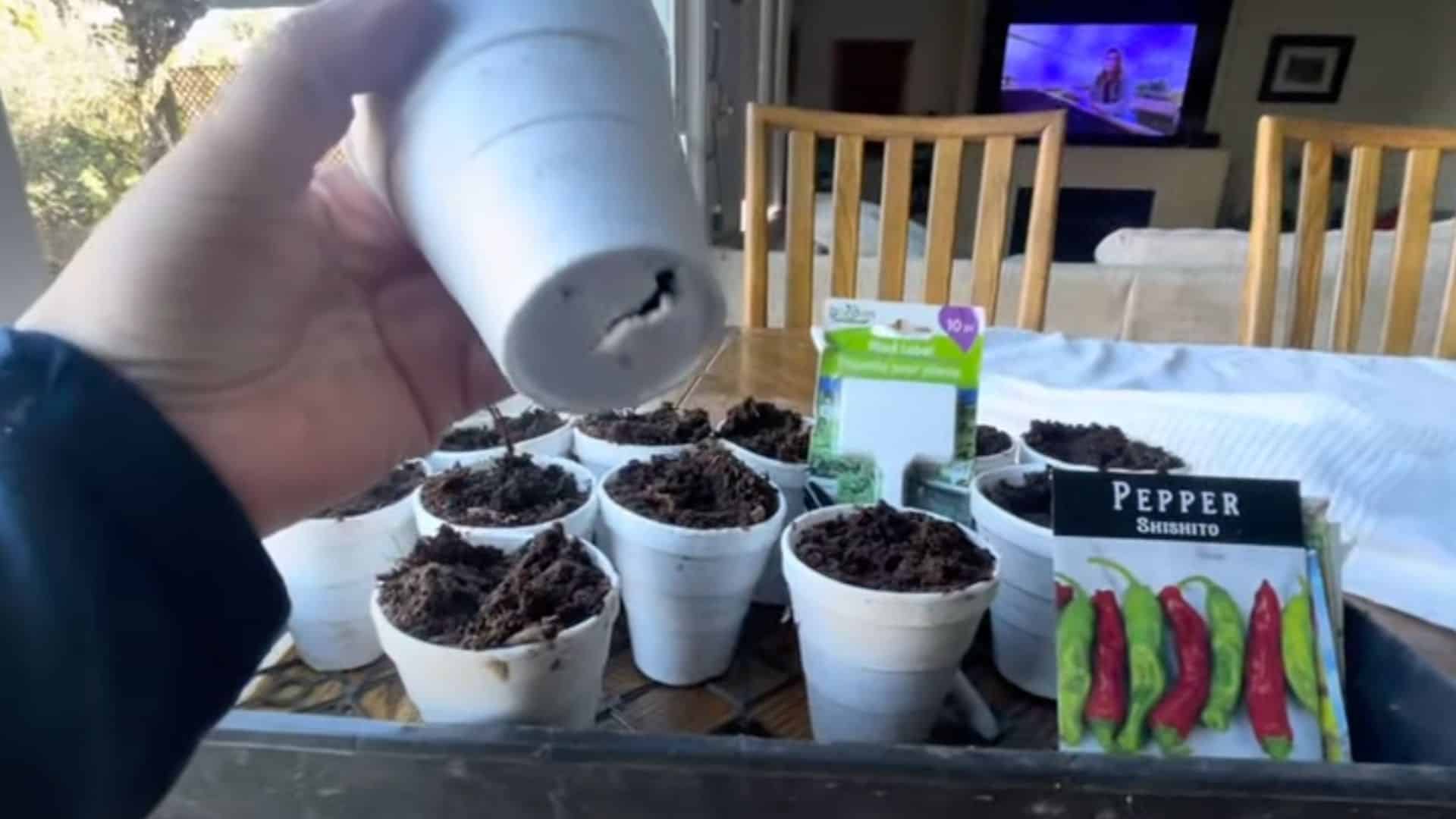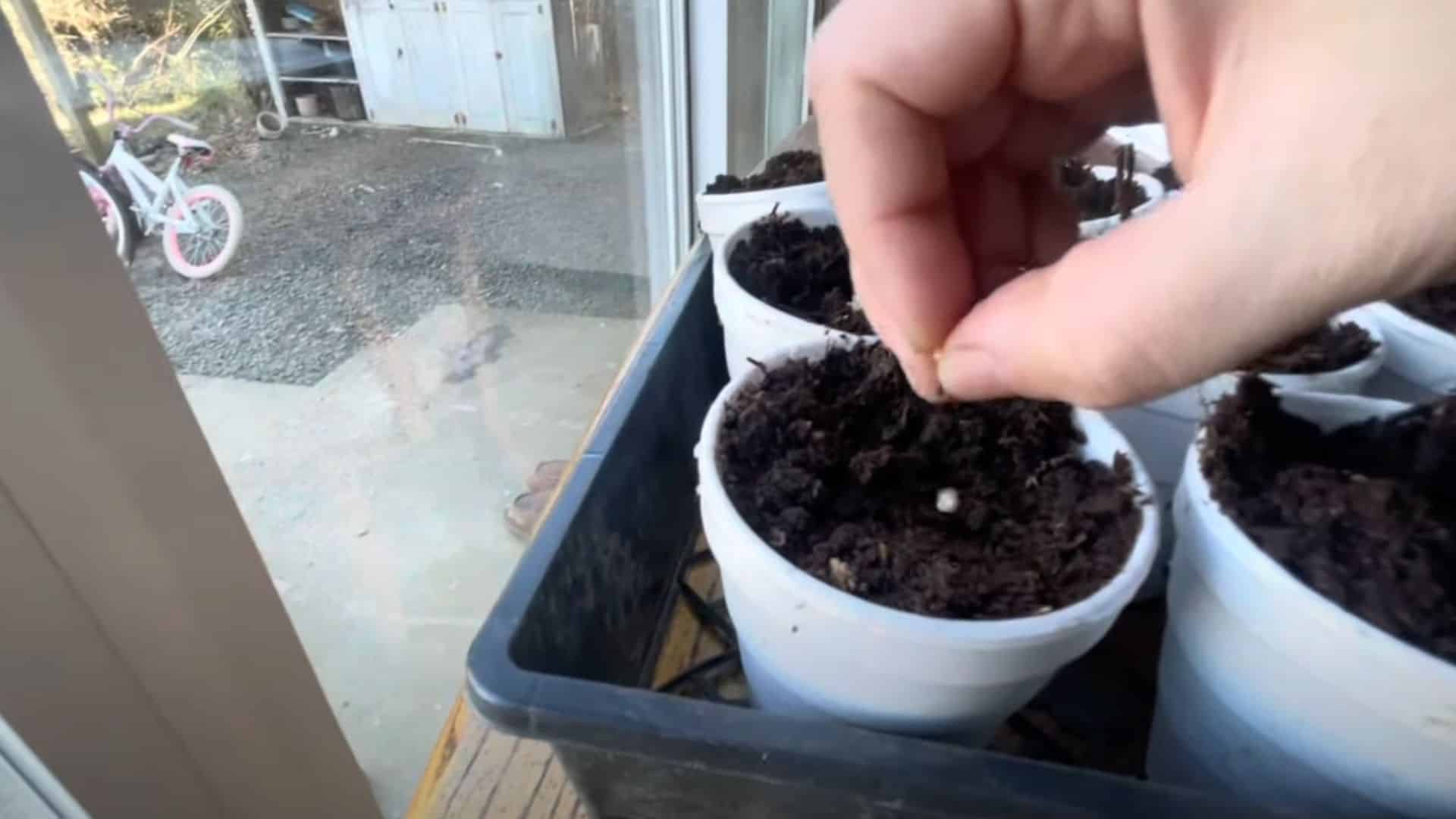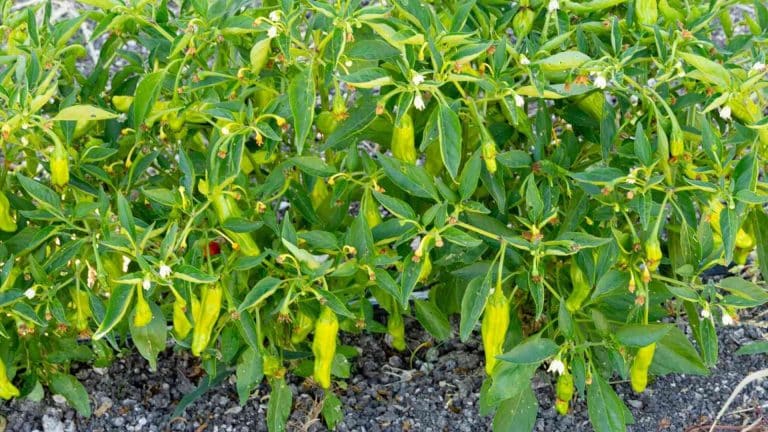Are you ready to grow Shishito Peppers? These small, mild peppers are beloved by both gardeners and food lovers for their unique flavor and ease of care.
They flourish in both containers and garden beds, making them perfect for any space. Shishito Peppers need little maintenance and are a joy to grow.
If tossed into stir-fries, salads, or enjoyed as a snack, growing yours offers unlimited possibilities. This guide will walk you through each step of the process, from planting to harvesting.
By the end, you’ll have all the knowledge to grow, care for, and enjoy a successful harvest of these flavorful peppers. Get ready to spice up your garden and meals!
Conditions You Need to Grow Shishito Peppers
| Requirement | Ideal Conditions | Why It Matters |
|---|---|---|
| Sunlight | 6–8 hours of direct sunlight per day | More light = more peppers and stronger plants |
| Soil | Well-draining, slightly acidic soil (pH 6–7) | Prevents waterlogging; supports healthy root growth |
| Temperature | 70–85°F during the growing season | Warmth encourages faster growth and higher yields |
Growing Shishito Pepper: Step-by-Step Guide
Growing Shishito Peppers from seed takes patience, but it is simple to follow in five steps from start to harvest.
Begin indoors with the proper containers and soil, and once your plants are strong enough, transfer them outdoors.
Material You Must Have
Getting your supplies together before you plant makes the whole process smoother. These simple items are all you need to grow strong, healthy Shishito Peppers from seeds.
- Shishito pepper seeds
- Recycled Styrofoam cups or containers
- Seed-starting mix
- Sharpie marker and plant tags
- Watering can or hose
- Sunny windowsill or grow light setup
- Tray for drainage
You likely already have most of these supplies at home. Having everything on hand keeps you focused and ready to grow peppers.
Step 1: Prepare the Containers and Soil

Fill recycled Styrofoam cups with well-draining seed-starting mix. Gently press the soil to remove air pockets, but avoid compacting it too much.
This ensures the seeds receive enough oxygen to germinate. Keep the soil slightly moist but not soggy for optimal growth.
Expert Insights
- Use recycled cups to reduce waste.
- Don’t pack the soil too tightly; it should remain loose.
- Moisture is important, but avoid soaking the soil.
Step 2: Plant the Seeds

Place 1-2 seeds per cup, about ¼ inch deep. Gently press them into the soil and cover lightly.
Label each cup with the plant type and planting date. This will ensure good spacing and tracking for your seedlings.
Expert Insights
- Plant only 1-2 seeds per cup for better spacing.
- Label the cups with a permanent marker for easy identification.
- Warm soil promotes faster germination.
Step 3: Water and Keep Warm

Water the cups with warm water to help the soil warm up and promote faster sprouting. Keep the soil evenly moist, but avoid waterlogging.
Place the cups in a sunny spot or under a grow light with 6-8 hours of light per day.
Expert Insights
- Warm water gives the seeds a head start.
- Maintain a warm environment (around 75°F) for best results.
- Consistent moisture is key; don’t let the soil dry out.
Step 4: Thin Out and Re-pot the Seedlings

As seedlings begin to sprout, remove the weaker ones and keep the most vigorous plants. When they have enough space, transplant them into larger pots to promote root growth.
This helps develop healthy, strong plants.
Expert Insights
- Thin out plants once they have two sets of leaves.
- Avoid overcrowding for optimal growth.
- Water before and after transplanting to reduce stress.
Watch how its done with this Shishito Peppers growing video tutorial:
Caring for Your Shishito Pepper Plants
Good care means stronger plants, more peppers, and fewer problems. Here’s how to keep your shishito peppers thriving from planting to harvest.
1. Water the Right Way: Keep the soil evenly moist but not soggy. Let the top inch dry slightly between waterings before adding more. This prevents root rot and helps the plants develop deep, strong roots. Use a soaker hose or water at the base to avoid wetting leaves, which can encourage disease.
2. Feed Them Regularly: Apply a balanced fertilizer (such as 10-10-10) every 4–6 weeks. This gives the plants the nutrients they need for steady growth, especially once flowers and peppers start forming. For organic gardens, compost tea or fish emulsion also works well.
3. Provide Support: As peppers develop, the branches can get heavy and bend. Stake or cage the plants early so you don’t damage roots later. This support keeps plants upright, improves airflow, and makes harvesting easier.
4. Watch for Pests: Check the undersides of leaves for aphids, whiteflies, or spider mites. Catching infestations early is key. Use natural remedies like neem oil, insecticidal soap, or a strong spray of water to knock pests off before they multiply.
5. Maintain Good Airflow: Space plants 18–24 inches apart and remove any dead or yellowing leaves at the bottom. Better airflow reduces fungal problems and keeps plants healthier overall.
6. Harvest Often: Pick peppers as soon as they’re green, glossy, and about 3–4 inches long. Frequent harvesting encourages the plant to produce more fruit over the season.
By following these care steps consistently, you’ll have vigorous, pest-free plants that reward you with a steady supply of mild, flavorful shishito peppers all season long.
Harvesting and Enjoying Your Shishito Peppers
| Stage | What to Do | Storage | Ways to Enjoy |
|---|---|---|---|
| Green (3–4 inches long) | Use scissors or snips to cut peppers off the plant to avoid damage. Harvest often to encourage more growth. | Store fresh in a paper or mesh bag in the fridge for up to 1 week. | Blister in a hot pan with olive oil and sea salt; add to salads, tacos, or stir-fries. |
| Red (left longer on the plant) | Pick when fully red for a sweeter, riper flavor. Regular picking still helps the plant produce more. | Freeze whole peppers in airtight bags or dry by hanging or using a dehydrator. | Grill on skewers, chop into pasta, pizza, or omelets; use dried peppers crushed or rehydrated. |
Common Problems and How to Solve Them
Here’s a quick guide to common problems with Shishito Peppers and their solutions to keep your plants healthy and productive:
| Problem | Solution |
|---|---|
| Pest Issues | Use neem oil or insecticidal soap to manage aphids, whiteflies, and other pests. |
| Fungal Diseases | Keep plants well-spaced, ensure good airflow, and avoid overhead watering to reduce fungal growth. |
| Growth Problems | Ensure plants receive ample sunlight and aren’t overwatered. Check for nutrient imbalances. |
With these simple fixes, you’ll keep your Shishito Peppers happy and healthy throughout the entire season.
Wrapping It Up
Shishito Peppers are an excellent addition to your garden. They’re easy to grow, need minimal care, and produce a bountiful harvest of flavorful peppers.
These peppers flourish in warm, sunny conditions, making them perfect for adding a burst of flavor to your dishes.
With the right attention, including proper watering, fertilization, and pest management, your plants will produce vibrant, healthy peppers throughout the entire season.
If you’re new to gardening or have some experience, growing Shishito Peppers is a fun and rewarding experience. If you’ve been considering starting your pepper patch, now’s the time!
Follow these simple tips and get started today. Feel free to share your thoughts; comment below!













